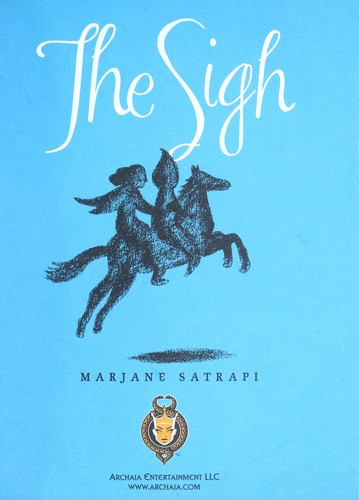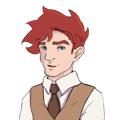Literally Graphic reviewed The Sigh by Marjane Satrapi
Review of 'The Sigh' on 'Goodreads'
3 stars
Not having read the original fairy tail - I don't think anyway - I feel a little ham-stringed but I really want to get back in the swing of reviewing things, so here goes!
Disclaimer: Do not pick up this book if you are expecting everything Satrapi does to resemble Persepolis, The Sigh is a completely different story and you may be sourly disappointed.
Unlike some of Satrapi's other works, The Sigh is an all ages illustrated traditional fairy tale. The key word here being traditional. Heads up, some parts of this book are not, as the old white guys on the street like to call it, politically correct. People get beheaded, there's a creepy guy who watches a girl as she sleeps, a woman sells herself into slavery and so much more! Reading Satrapi in general, but even more so The Sigh specifically, has forced me to reconsider a …
Not having read the original fairy tail - I don't think anyway - I feel a little ham-stringed but I really want to get back in the swing of reviewing things, so here goes!
Disclaimer: Do not pick up this book if you are expecting everything Satrapi does to resemble Persepolis, The Sigh is a completely different story and you may be sourly disappointed.
Unlike some of Satrapi's other works, The Sigh is an all ages illustrated traditional fairy tale. The key word here being traditional. Heads up, some parts of this book are not, as the old white guys on the street like to call it, politically correct. People get beheaded, there's a creepy guy who watches a girl as she sleeps, a woman sells herself into slavery and so much more! Reading Satrapi in general, but even more so The Sigh specifically, has forced me to reconsider a lot of my opinions about violence as entertainment - especially in all ages literature.
While this book does tend to rub a lot of people's modern sensibilities (including myself) the wrong way, to completely dismiss it is to completely miss the place where Satrapi is coming from, which is from a traditional space - not reinventing the wheel, but pushing it forward in her own ways. Subverting traditional stereotypes in a way to prick at the establishment.
As someone who has read quite a few children's classics, I have to say there were a number of things about this story that really stood out to me. Firstly, the main character is a very stand-alone female character who gets to go on adventures, makes mistakes, and gets to correct those mistakes - creating a happily ever after for her and her prince.
The second thing that really stood out to me (as it does with so much of Satrapi's work) is the effortlessly way in which she brings racial diversity to the table. Even with many of the supposedly traditional Arabian stories I've listened to this year, they all have come to me through the lens of British imperialism. The "exotic" "barbarian" flavor is enough to turn one's stomach. The Sigh, on the other hand, is written by someone from these far off locals, and unsurprisingly, it is populated by people just like everyone over here in the cultural west. I really should resist saying "I told you so" but this is one of my key reasons for focusing on diverse reads.
The artwork in The Sigh does feel a bit childish from time to time, but it is a children's book. It's certainly more than a little interesting to see Satrapi work in colours. I certainly wouldn't have minded if she had gone in a more traditional graphic novel direction, but I get the impression that this was really a chance for her to experiment with a lot of new things.
Overall I feel like I would most highly recommend this to people who read a lot of traditional fairy tales. These are the kinds of people that will pick up on the subtle changes of emphasis that Satrapi is employing.

